Ecologies
Introduction
The Indian Ocean is a vast body of water, stretching from Cape Agulhas in South Africa to the Easternmost end of Indonesia, and extending from there down to Cape Leeuwin in southwestern Australia and up to the China Seas. Straddling parts of both the Northern and Southern hemispheres, it covers approximately one fifth of the total ocean area of the world and nearly fifteen per cent of the entire globe.
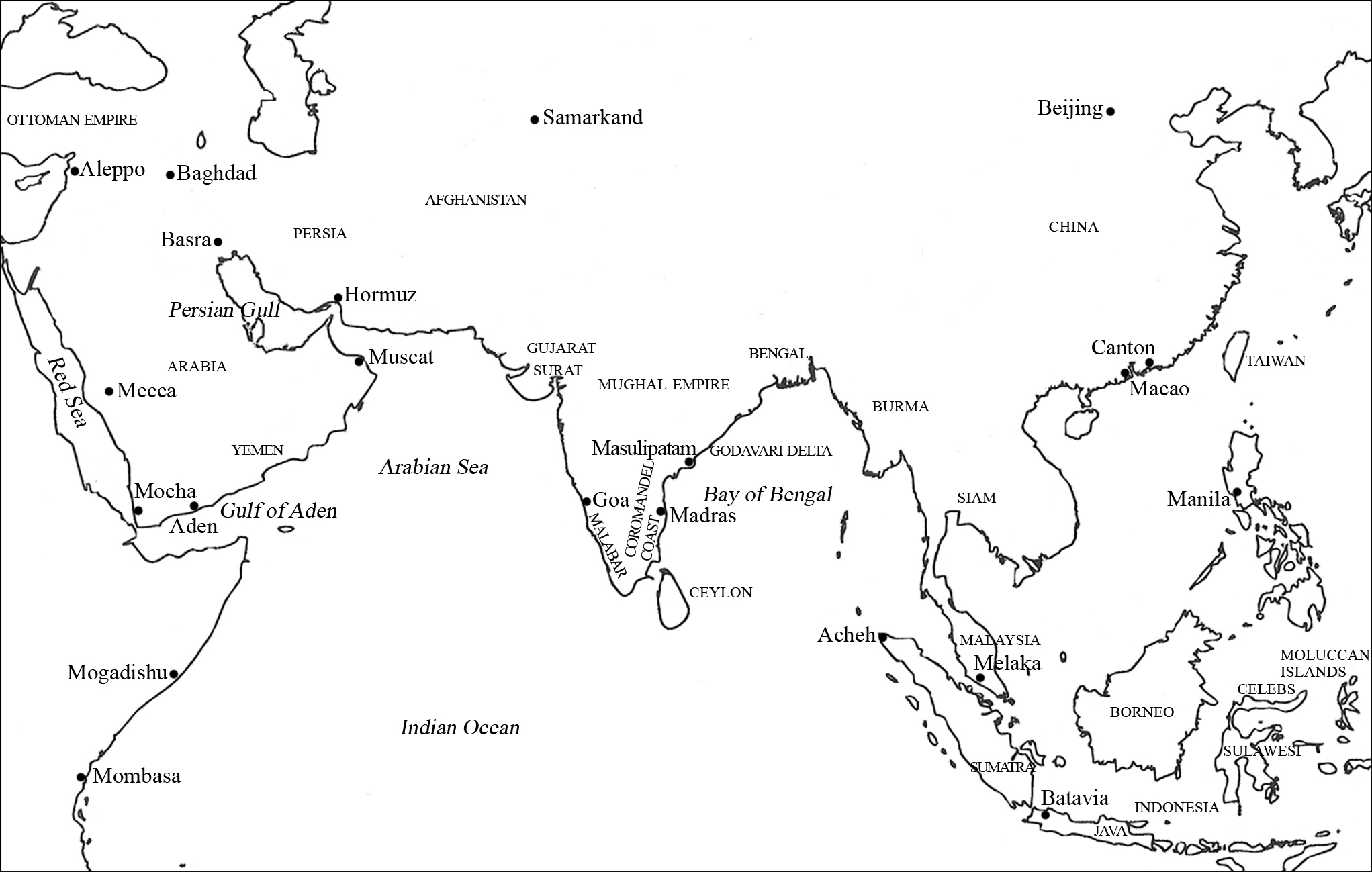
Contemporary map picturing the Indian Ocean World
Image Credit: CAPASIA, CC-BY 4.0
Ecosystem
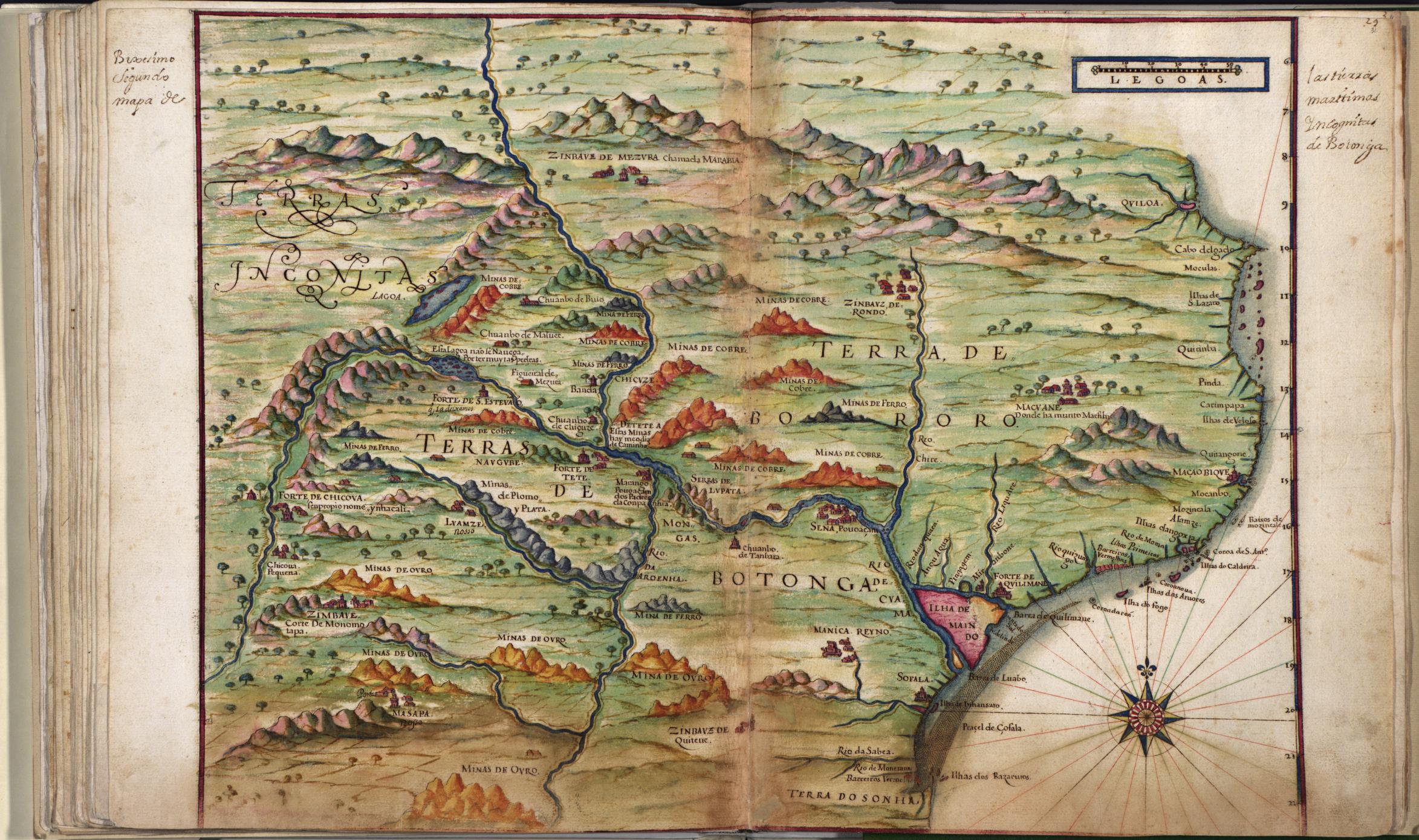
Historical map showing a diversity of ecosystems in East Africa (Zambezia and surrounding regions) Image Credit: João Teixeira Albernaz, 1630, Library of Congress Geography and Map Division Washington, D.C.,
https://www.loc.gov/resource/g3200m.gct00052/?sp=25
The Indian Ocean World encompasses tropical, subtropical and temperate zones. It is a terraqueous world, of lands and water, that includes a host of seas) and inland seas, islands, archipelagos, straits, deltas and peninsulas. Rivers and coastal regions connect the ocean to a variety of inland regions including mountains, lakes, deserts, savannas and forests. The ocean also contains a wealth of underwater ecosystems.
Monsoons
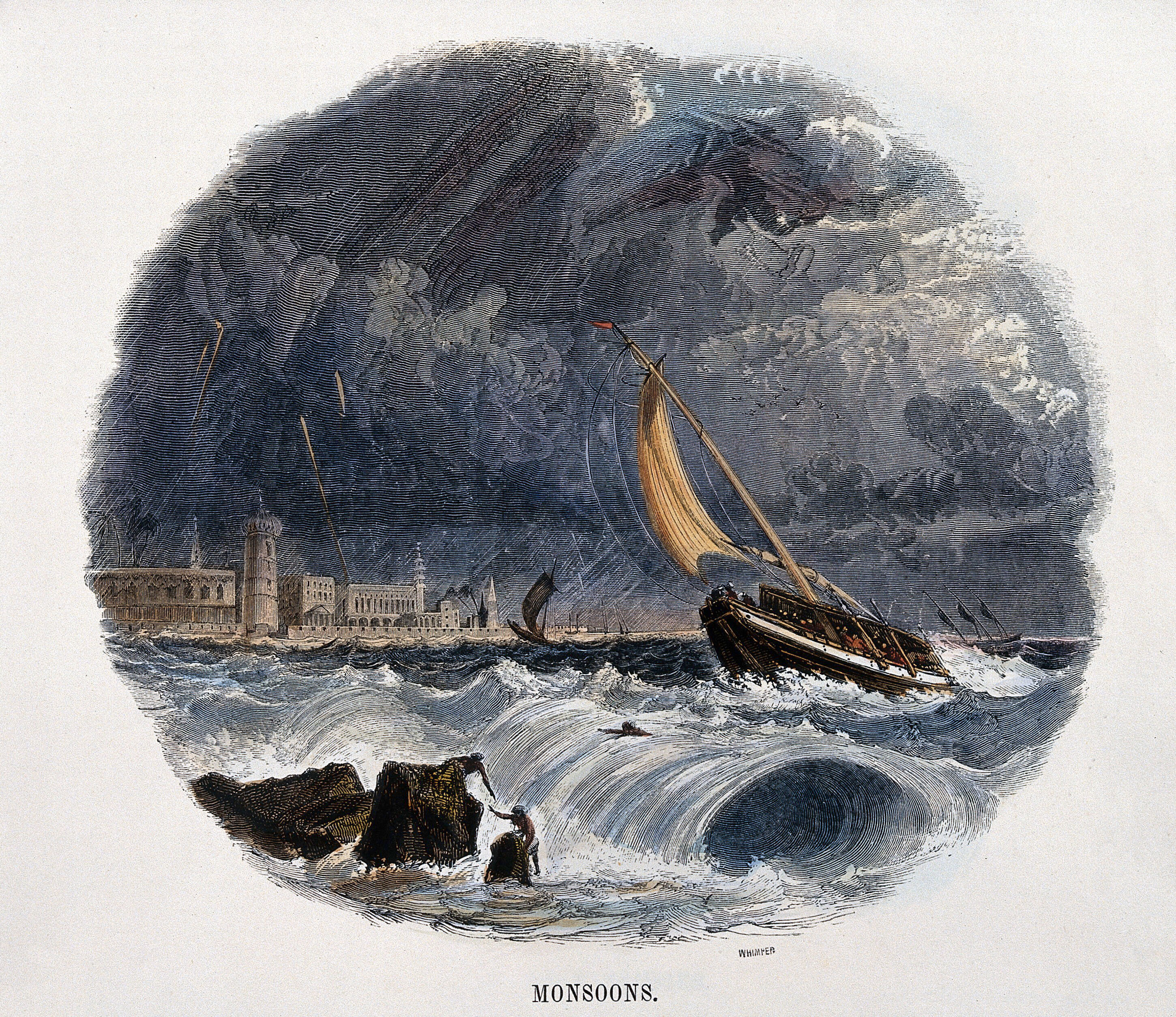
The monsoon and the sea in nineteenth century India. Image Credit: Charles H. Whymper, [n.d.],
https://wellcomecollection.org/works/ekkbndcg/images?id=efzb6unq
The diverse ecosystems of the Indian Ocean have been united for millennia by the monsoon system, and related environmental factors such as rain, winds and maritime currents. The monsoon is the common point of reference which makes it possible to speak of an ‘Indian Ocean World’.
Dhow
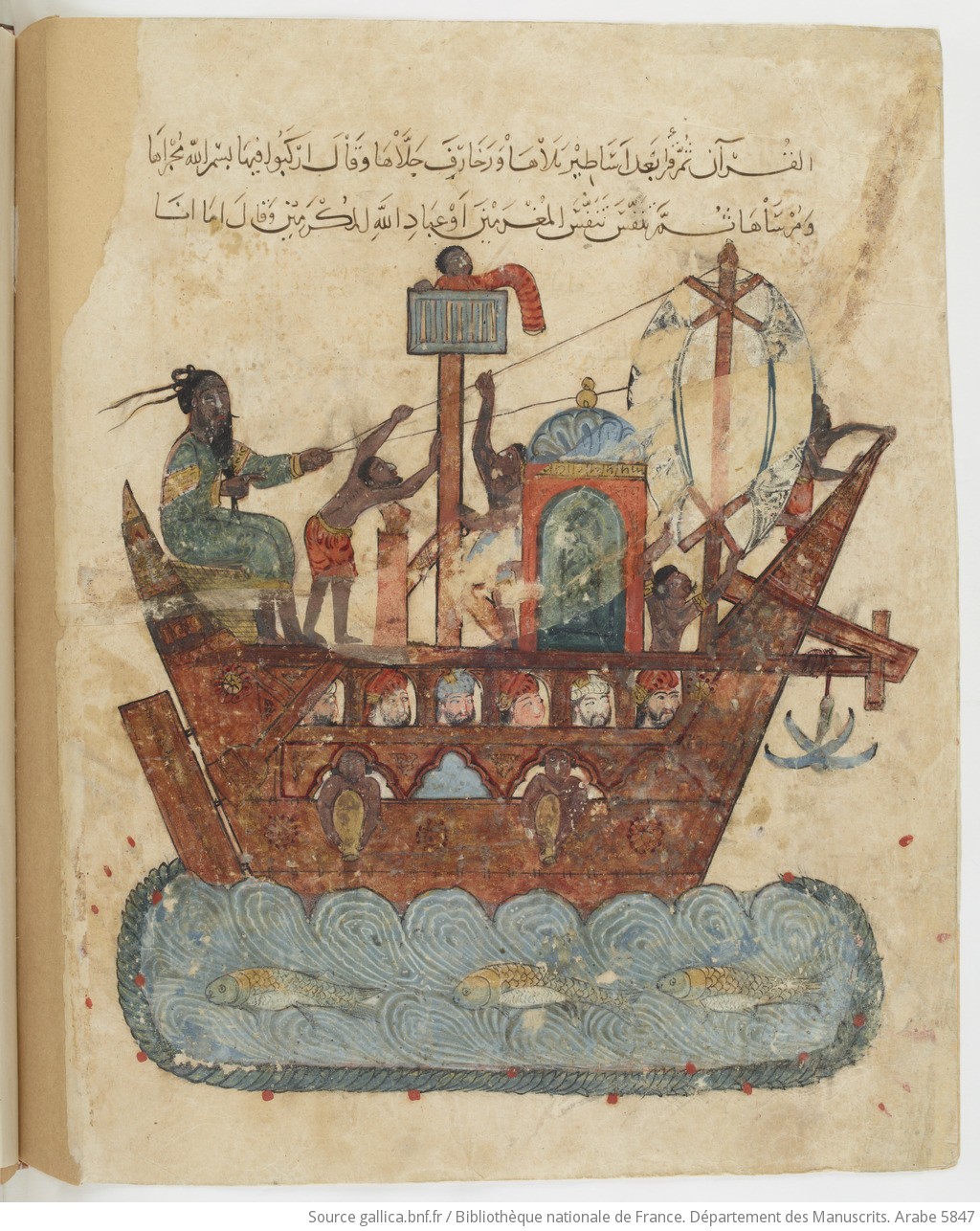
Image showing a traditional boat of the Indian Ocean, called ‘dhow’, during the Middle Ages
Image credit: Les Makamat de Hariri ; exemplaire orné de peintures exécutées par Yahya ibn Mahmoud ibn Yahya ibn Aboul-Hasan ibn Kouvarriha al-Wasiti, 1236-1237, Bibliothèque nationale de France (BNF Gallica), Paris,
https://gallica.bnf.fr/ark:/12148/btv1b52519766k/f248.item#
Monsoon is the term used to describe the seasonal prevailing winds — and accompanying heavy rainfall — which are such a remarkable feature of the climate in South and South-East Asia. The monsoon posed significant challenges to Europeans when people of the Indian Ocean World had learnt to navigate it for millennia.
Diversity Commodities
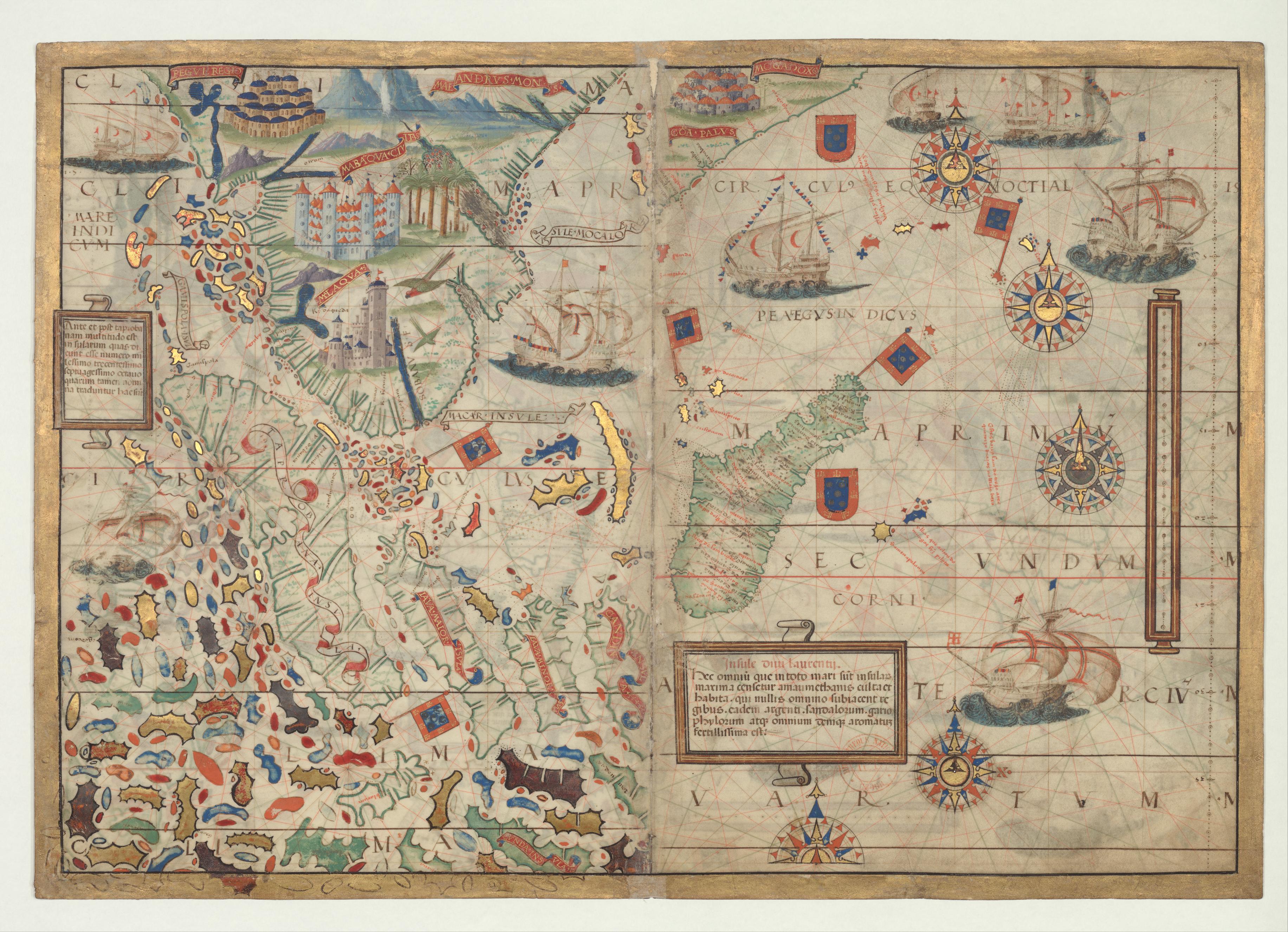
Historical map showing the diversity of commodities of the Indian Ocean World.
Image Credit: Nautical Atlas of the World, Folio 3 Recto, Northern Indian Ocean with Arabia and India and Folio 3 Verso, Southern Indian Ocean with Insulindia, and Madagascar, 1519. Retrieved from the Library of Congress, Washington D.C.,
https://www.loc.gov/resource/gdcwdl.wdl_18559/?sp=2
The multiple and diverse ecosystems of the Indian Ocean allowed the production of very different goods, both from the seas and the land areas. Shark fins, tortoise shells, pearls, corals, spices, tropical woods, precious stones, frankincense and myrrh, coffee, ivory, metals, textiles that include silk fabric and cottons were amongst the goods available across the Indian Ocean World. Water was essential not just to trade these products on the seas, but also to produce them, especially for weaving and mining.
Coffee
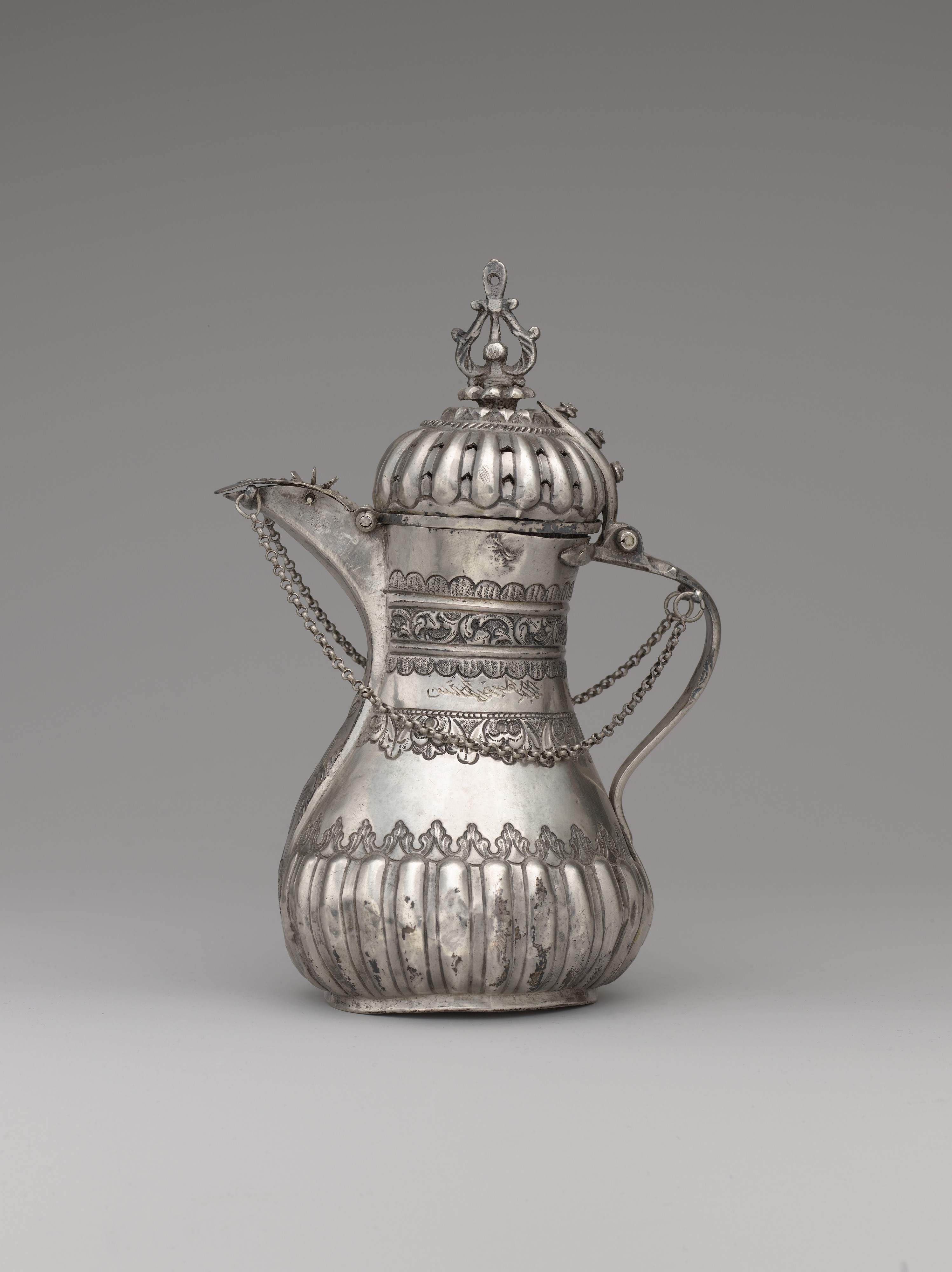
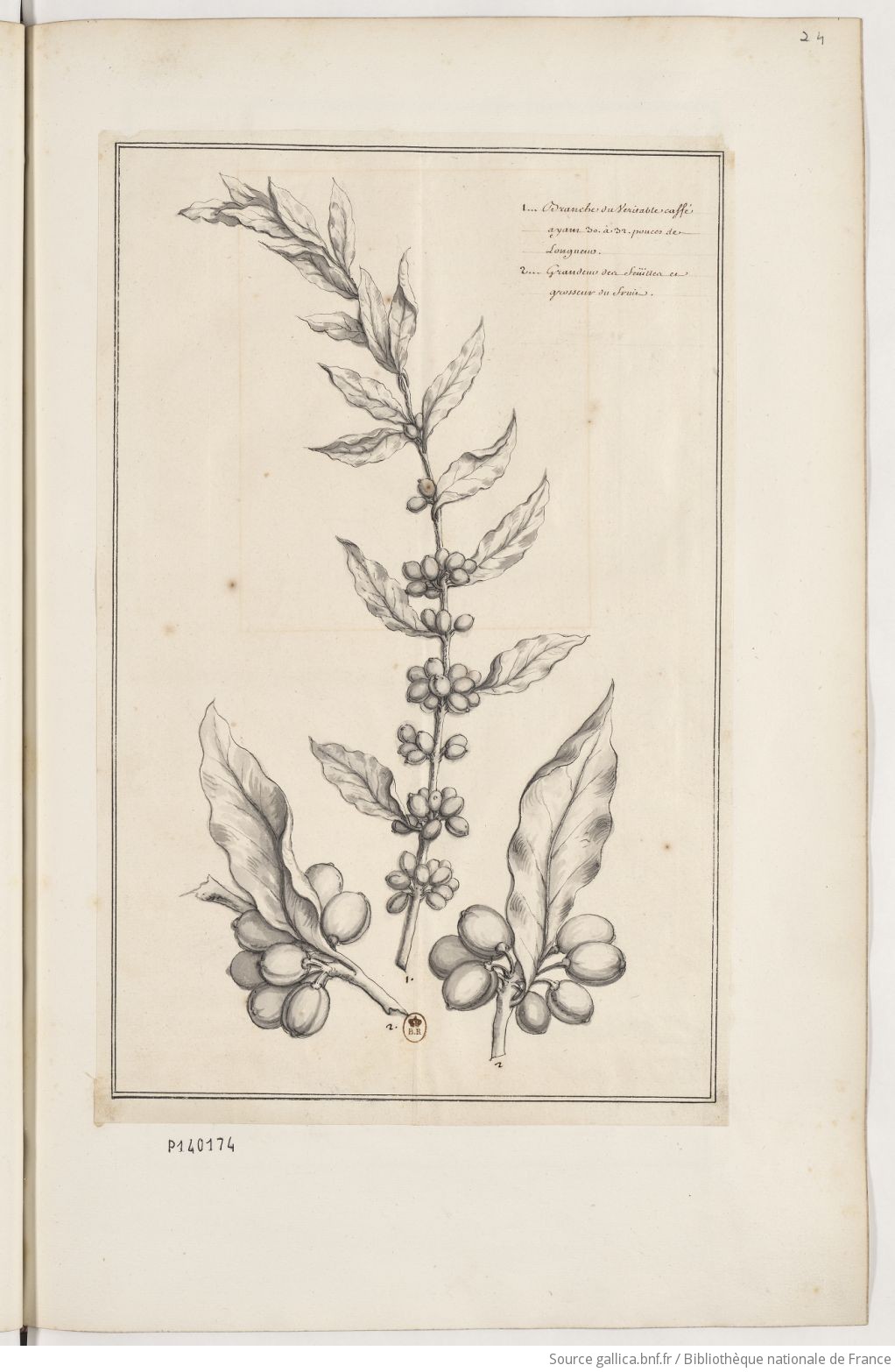
https://gallica.bnf.fr/ark:/12148/btv1b52515790r/f61.item.zoom
Coffee is produced from the roasting of the cherries of coffee shrubs. Coffea Robusta and Coffea Arabica are the two species of coffee plants cultivated commercially, and the Arabica is still dominant in Asia and the Indian Ocean World. Arabica coffee is native to the rainforests of the high plateaus of the Kaffa region of Ethiopia. In the sixteenth century, with coffee already customary to the populations of the Middle East region, coffee cultivation was introduced in the mountainous region of Yemen bordering the Red Sea. There it found the perfect geographical conditions to develop, with an altitude above one thousand eight hundred metres, a warm climate, and a significant amount of rain.
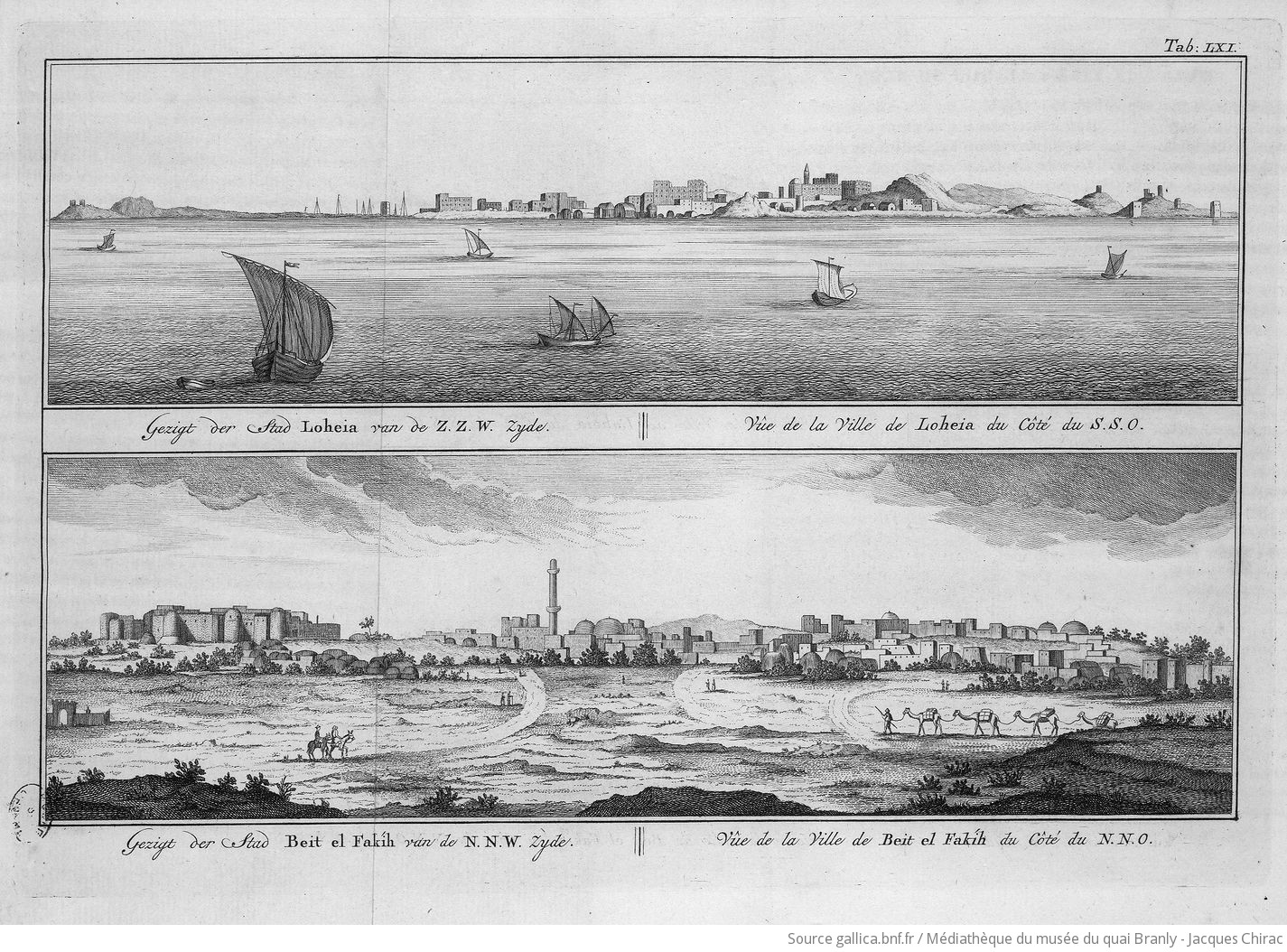
Eighteenth century drawing illustrating a travel account and picturing Beit-al-Faqih, in the Yemeni coffee highlands
Image credit: Georg Wilhelm Baurenfeind, Illustrations de Voyage en Arabie , 1776, p.249, Bibliothèque nationale de France (BNF Gallica), Paris,
https://gallica.bnf.fr/ark:/12148/btv1b2300667t/f62.item
A region of coffee production developed in the hinterland of Sanaa, where coffee shrubs were co-planted in agricultural terraces with fruit trees. Coffee would be harvested from November to February, before the cherries would be dried. Beit-al-Faqih was the centre of the Yemeni coffee region, with a market where coffee producers would come sell coffee every day, but Fridays.